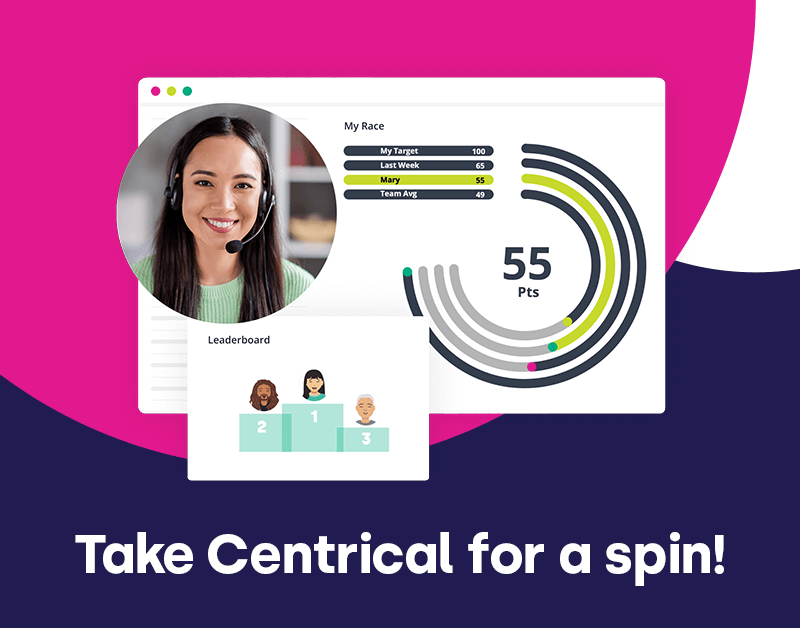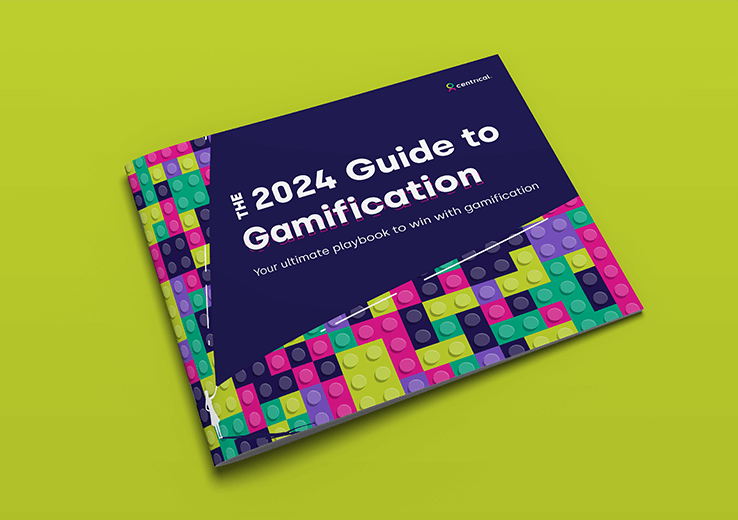Supercharge eLearning with Gamification – Webinar Recap
We had a great webinar with Monica Cornetti of Sententia Gamification as our guest speaker. Here is the recap of the webinar, where Cornetti discussed:
- The G.A.M.E.S process
- Why points and badges don’t matter much; and
- The four common gamification design mistakes
“Gamification is motivational design. The use of game elements and game mechanics in a non-game context in order to engage users and solve problems. Forward thinking organizations are beginning to understand how the power of gamification can increase engagement as well as the bottom line”, says Cornetti.
G.A.M.E.S: the 5-step process
An important distinction to make is that gamification is not about games. When you look at gamification design, we have a proven and trademarked 5 step process. We use the acronym G.A.M.E.S to remember that 5 step process.
- The G is for Goal, we start with what is our goal, what is our business objective.
- The A stands for adventure, we always craft some form of narrative, storyline or adventure in our onboarding, learning and eLearning program.
- The M stands for methods, and that’s methods for giving information and for learning how people are going to learn rather than just talking at people or just having them to read out of a slide.
- The E stands for engagement. Engagement is the actual gamification elements, mechanics and dynamics.
- The S stands for Sync it, and this is where we pull it all together.
You don’t actually get to game mechanics until the 4th level. I know that it seems contradictory because if we are doing gamification – what’s with all the other stuff we got to do first? But haven’t you heard the expression that fundamentals are the building blocks of fun? And really until we do these other three levels – determine why we are gamifying, what is our objective, who’s playing, figure out the narrative and the experience that we are going to give them – only then we can begin gamification.
It’s not about the badges or the points
The important concept here is that gamification is about so much more than points, badges and leaderboards. If someone tells you that their LMS is gamified because it has points, badges and leaderboards, they are wrong. That’s like saying that if you have a ball and a bat you have baseball. A key phrase applies here: “Less is More”.
Just because you can use 300 game mechanics doesn’t mean that you should, because gamification is 75% psychology and 25% technology. So it’s important to understand who is playing the game and what motivates them. And in Sententia we call it “the 16 whys”, what makes us different is the priority we give each of these needs or whys for doing something.
For instance, some of us want rewards more than status, or achievement more than self-expression, competition more than altruism. These 16 whys are universal and cross generations, demographics, cultures and genders. If you haven’t focused on you players, you might not be motivating them. In fact, you may be causing them to disengage. That is why simply throwing in mechanics to the program is not enough. You need to understand the whole gamification process, and we begin with the motivational profile of the players.
In a nutshell, at this level we focus on desired behaviors and player motivators, we then align mechanics with those motivators to get the behavior we want. Let’s say that we want people to click a LIKE button. Next we should consider what would motivate the user to actually click the button, what’s in it for them. What mechanics can we use to entice them to click the button? Again, the engagement level is where we add the game elements to our program, we didn’t start the program by saying that we are going to have the badges, we are going to have heads up displays, we are going to have a countdown clock. No, we set our objective, create our narratives, determine our methods for instructions and learning and then add the game elements. If something motivates me, like achievement, I would really like to see points add up, but if I’m working with the real creative types, artistic, good communicators, good artists, chances are points and levels aren’t going to appeal to them as much as having challenges and virtual goods.
Costly design – the 4 common mistakes
There are 4 major mistakes with gamification design:
- Failing to answer why are we playing. Instead of asking how can we add some gamification to a training program, begin with clearly defined objectives and then ask yourself if gamification is a suitable to achieve our objectives. Be crystal clear when stating your project’s objectives. The more specific your objectives are, the greater your chances are to achieving them.
- Failing to identify “Who the game is for?”. Not only we believe everyone should be like us, but that they are like us. So in gamification design it’s important to realize that you, as a designer, have different motivation playing the game than most of the people you encounter. Don’t assume your players want things your way, and the example I’ll give you is curiosity. If I was a betting woman, I would bet that most of us on that joined our webinar call are highly curious and motivated, or you wouldn’t be here otherwise. Unfortunately, most of your learners are not. So if we put the elements in the game that they have to dig deep to get the answers, chances are that they are not going to like that at all.
- Attempting to fix a broken product or service with Gamification. You can put a new paint job on this old car and think that it’s going to run, it still has a broken down engine. The same goes for gamification design. If done right, it’s going to be colorful, it’s going to be fun, it’s going to be inviting, it will draw in your users, but when they find out that the product doesn’t match your marketing line, they will wonder why you bothered gamifying the process. It will appear as you were simply trying to disguise a broken system. You have to solve a problem of a bad product or bad service before you can truly leverage the power of gamification.
- Thinking that points, badges, and leaderboards are gamification. There are over 300 game mechanics and some will work better for your program, so slapping them on simply won’t work for you in the long run, but in the short run. It will work for a very short period of time.
If you’d like to listen to the webinar, you can access the replay here
Engage and motivate your frontline teams
Improve performance with an AI-powered digital coach
Deliver world class CX with dynamic, actionable quality evaluations
Boost performance with personalized, actionable goals
Nurture employee success with the power of AI
Listen and respond to your frontline, continuously
Drive productivity with performance-driven learning that sticks
Drive agent efficiency, deliver client results
Keep tech teams motivated and proficient on products and services while exceeding targets
Maintain compliance while building customer happiness and loyalty
Enlighten energy teams to boost engagement
Engage, develop, and retain your agents while driving better CX
Improve the employee experience for your reservations and service desk agents



 Madeleine Freind
Madeleine Freind
 Natalie Roth
Natalie Roth Linat Mart
Linat Mart












 Doron Neumann
Doron Neumann Gal Rimon
Gal Rimon Daphne Saragosti
Daphne Saragosti Ella Davidson
Ella Davidson Ariel Herman
Ariel Herman Ronen Botzer
Ronen Botzer